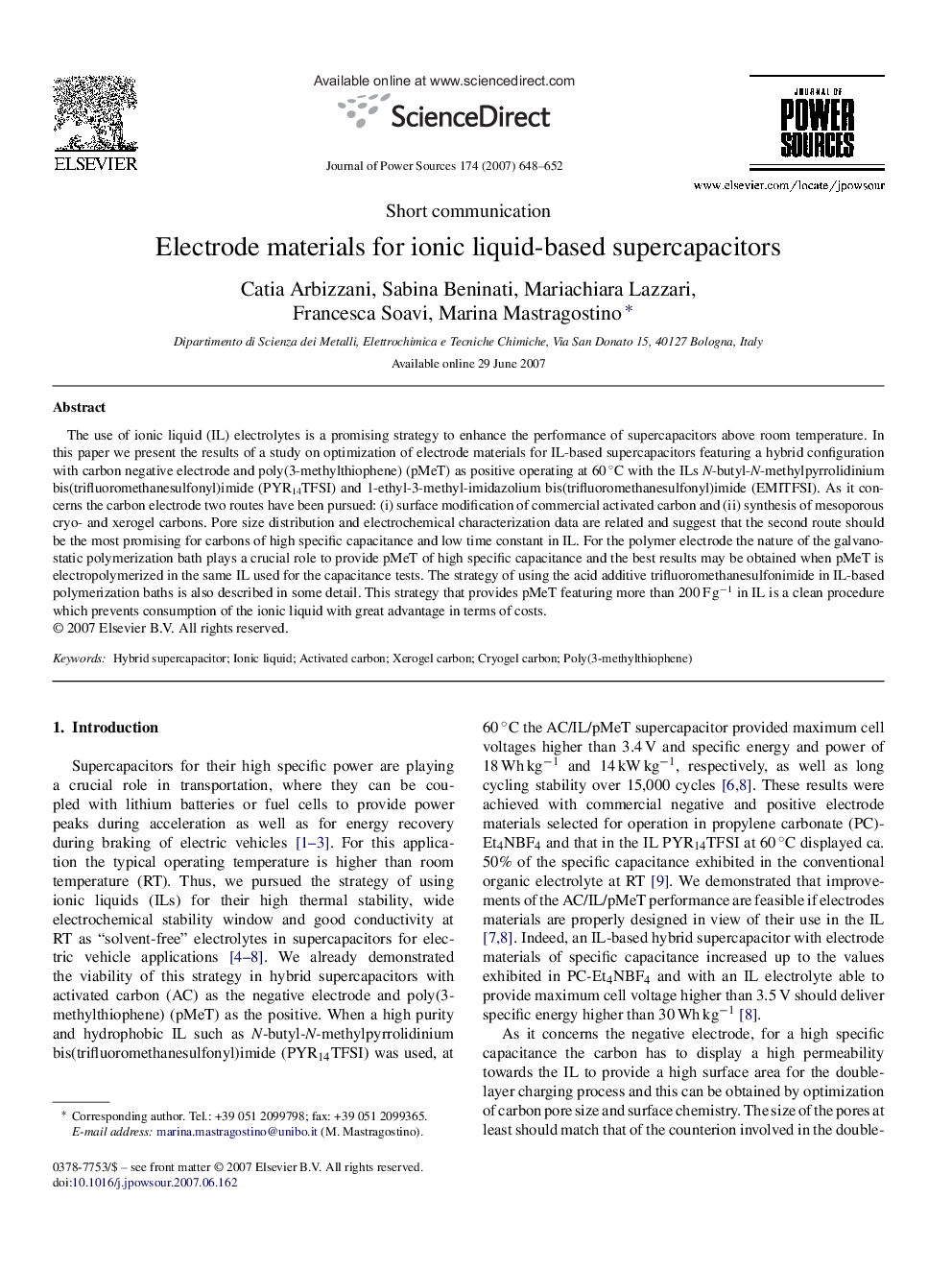| Article ID | Journal | Published Year | Pages | File Type |
|---|---|---|---|---|
| 1285977 | Journal of Power Sources | 2007 | 5 Pages |
Abstract
The use of ionic liquid (IL) electrolytes is a promising strategy to enhance the performance of supercapacitors above room temperature. In this paper we present the results of a study on optimization of electrode materials for IL-based supercapacitors featuring a hybrid configuration with carbon negative electrode and poly(3-methylthiophene) (pMeT) as positive operating at 60 °C with the ILs N-butyl-N-methylpyrrolidinium bis(trifluoromethanesulfonyl)imide (PYR14TFSI) and 1-ethyl-3-methyl-imidazolium bis(trifluoromethanesulfonyl)imide (EMITFSI). As it concerns the carbon electrode two routes have been pursued: (i) surface modification of commercial activated carbon and (ii) synthesis of mesoporous cryo- and xerogel carbons. Pore size distribution and electrochemical characterization data are related and suggest that the second route should be the most promising for carbons of high specific capacitance and low time constant in IL. For the polymer electrode the nature of the galvanostatic polymerization bath plays a crucial role to provide pMeT of high specific capacitance and the best results may be obtained when pMeT is electropolymerized in the same IL used for the capacitance tests. The strategy of using the acid additive trifluoromethanesulfonimide in IL-based polymerization baths is also described in some detail. This strategy that provides pMeT featuring more than 200 F gâ1 in IL is a clean procedure which prevents consumption of the ionic liquid with great advantage in terms of costs.
Related Topics
Physical Sciences and Engineering
Chemistry
Electrochemistry
Authors
Catia Arbizzani, Sabina Beninati, Mariachiara Lazzari, Francesca Soavi, Marina Mastragostino,
